QuestionQUESTION: We bought a RT for my son for Christmas so we have had her since 12/24. The information you have is very helpful - the pet store had us bring her home in an aquarium and that went back immediately after reading information here. We have now built her an enclosure - she is eating and semi-active in the enclosure and very active when we take her out. Question: how often can she be handled? We are taking her out daily - she seems fine with it but how much is too much?
ANSWER: Hi Elissa,
I'm glad I've been of help to you. A good website for complete information is www.russiantortoise.org, and there's a link to join the Yahoo RT group on the front page of the site if you're so inclined.
As far as handling goes, a lot of it depends on the individual tortoise. Pet store RTs are wild caught, and some just seem to be more outgoing than others. I have some that will follow me around and others that know me but prefer not to be handled much. I think if your son's tortoise seems to be OK with being handled and doesn't show signs of stress (not eating, burrowing, etc.), then you can continue with what you're doing.
Also, just so you know, your tortoise may actually be a male. Most of the recently imported RTs are in the 4" range, which is an iffy size for sexing. Until maturity, males look female (have the stubby tail). Usually around 5" you can be sure, or when the male develops the longer, heavier tail. If your tortoise is in the 5-6" range (measured straight down the plastron, or bottom shell) and still has the stubby tail, then it's almost certain it really is a female.
Hope this helped. Please feel free to ask if you have more questions!
---------- FOLLOW-UP ----------
QUESTION: Thanks for your information! It is interesting you mentioned the sex of the tortoise because I asked the store "expert" and he turned the tort over and showed me the belly - said something about concave versus flat? Therefore - she was female. It makes me feel bad that these RTs are being captured in the wild. This isn't illegal? If I would have known that I would have not purchased her. She seems so friendly - I just assumed she was used to being cared for. We take her the park and for rides - she seems to like being pet on her legs and her neck. She follows and nudges her head under your hands until you pet. She eats well and does not try to burrow - so I can assume she is happy? Sometimes I thought she was hissing but instead I noticed it happens occasionally when she pulls her head / legs in an out of the shell quickly. Is that normal?
AnswerHi Elissa,
#1 thing to know when you buy a tortoise is that pet stores almost never know a darn thing, so avoid their advice. I saw a big female RT in our local pet shop once--it was over 7" and 3 lbs., and couldn't possibly be a male or young, but they insisted she was a 2 year old male, lol. *Some* tortoise species do have the plastron concavity in the male, but not all. RTs are sexed primarily by their tails. Here's a link to sexing RTs: http://www.russiantortoise.net/male_female.htm.
Unfortunately, nearly all pet store RTs are still wild caught; I've actually never seen a CB (they'd be hatchlings) in a pet store. The importation process is pretty bad and many of them don't survive. I didn't know this when I got my first Russian either, but now I do the best I can to give my adults a good home. They haven't been bred in this country very long (since the mid '90s, I think), and have small clutches, so at this point there just aren't enough CB hatchlings to keep up with the demand. Most hobby breeders like myself also keep the price of hatchlings somewhat high to discourage people from treating them like a throwaway pet. As I said before, some WC Russians are pretty friendly and some aren't, so sounds like yours is one of the more outgoing ones.
The "hissing" you hear is just air being expelled forcefully when she pulls in her legs quickly. Russians don't have a diaphragm like we do, so some of their breathing is assisted by leg movement. Sometimes you might see her "shrugging" her shoulders, too, which just means she's breathing a little faster than usual due to being excited in some way.
It sounds like she's doing pretty well. Give her plenty of space and a good varied diet (no fruit, veggies, or pellets), and if you can build her an outdoor enclosure for the warmer months that would be great. She should have a long and healthy life with you. Ask away if you have any other questions.

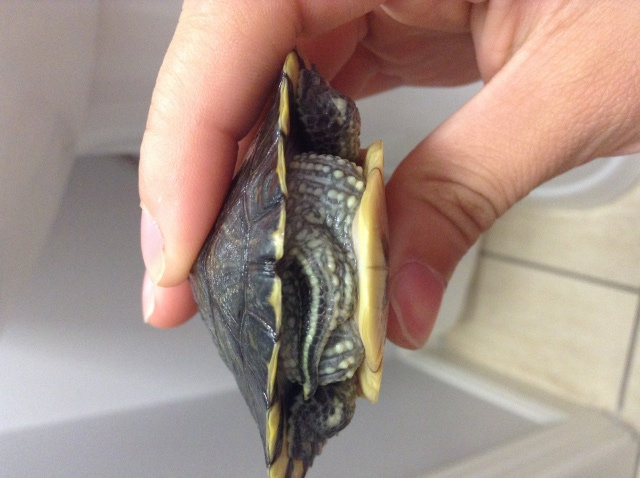 Turtles skin
Question
Back Front
I am just noticing tha
Turtles skin
Question
Back Front
I am just noticing tha
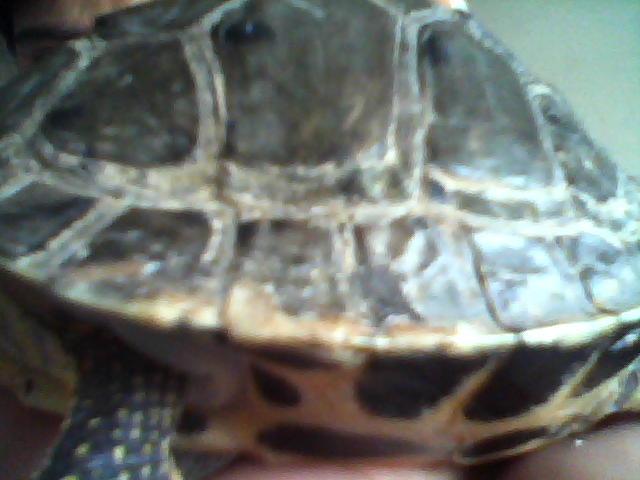 about diet and exact environment which i should create for her
Question
shell
I have a female turtle,jingo.i dont kno
about diet and exact environment which i should create for her
Question
shell
I have a female turtle,jingo.i dont kno
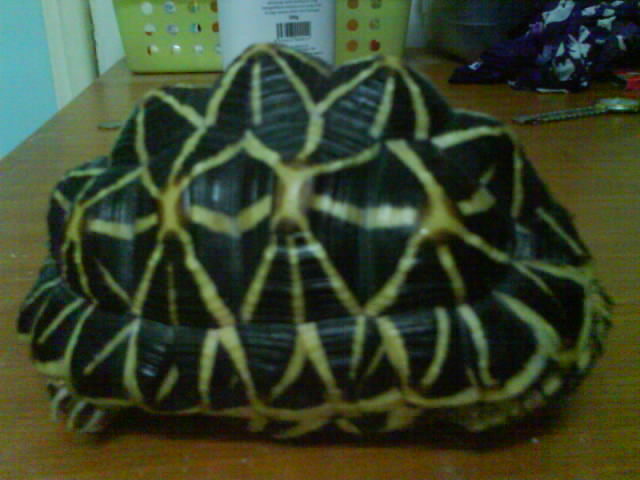 Shell
Question
Star Tortoise
Hi, my friend told me that my st
Shell
Question
Star Tortoise
Hi, my friend told me that my st
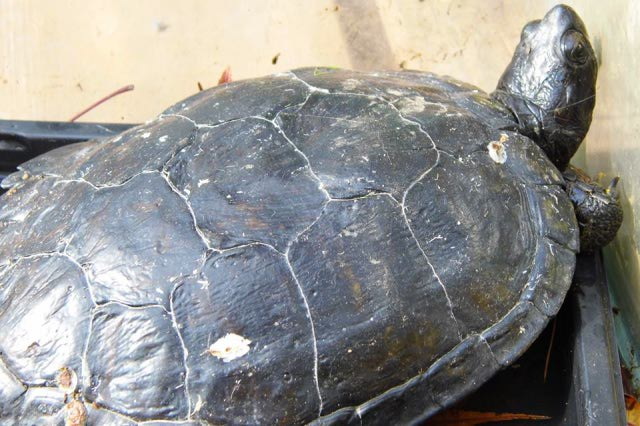 western box land turtle
Question
Turtle 1 Head
Hi! The manag
western box land turtle
Question
Turtle 1 Head
Hi! The manag
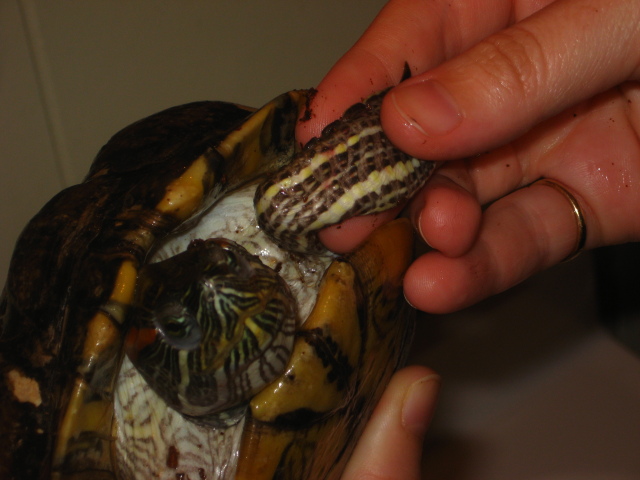 red eared slider shell rot
Question
turtles leg
We have a red eared slider, about
red eared slider shell rot
Question
turtles leg
We have a red eared slider, about